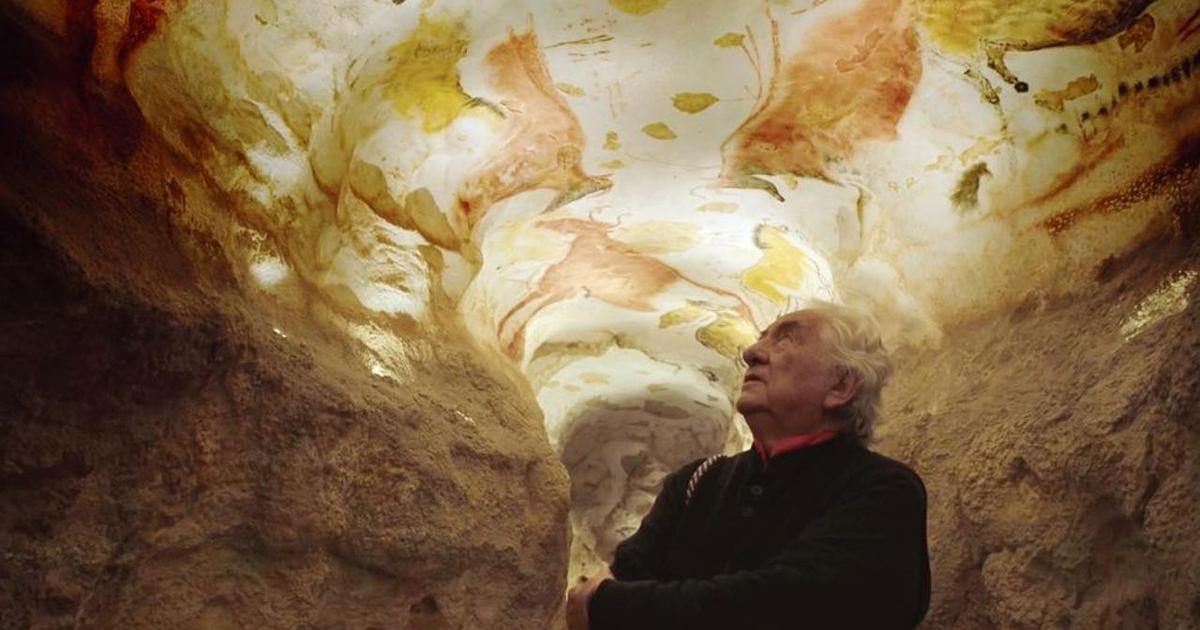Swarms of wild beasts, bouquets of buttocks and, in the middle of all this prehistoric profusion, Daniel Buren.
The French visual artist to whom we owe the black and white columns of the main courtyard of the Palais-Royal examines the replica of the Lascaux cave for the needs of
Sapiens or the birth of art
.
The brief encounter between the artist and the works painted over 20,000 years ago is worth the detour.
Faced with the polychrome menagerie and the horned bulls of the cave, Buren, in a primitive swoon over these reproductions, reconnects with the shock of abstraction.
He contemplates, amazed, the pure line of the drawing and the moving realism of the silhouettes which, "
as in great painting, make things more real than reality.
".
A prodigious exception to our penchant for introspection, no human figure appears on the decorated walls.
Faced with so much technique and beauty, a comparison imposes itself on the artist: that of Picasso's bullfights.
A string of mobilized archaeologists and anthropologists
Slender stags, ibexes, stocky aurochs and thickly haired bison inhabit the various prehistoric sites explored by Pascal Goblot's film.
From the valley of Foz Côa, in Portugal, to the Chauvet cave, passing by that of Niaux, in the Pyrenees, each stop sheds light on a key moment in prehistoric art.
These ancient periods are adorned with exotic names which segment, among specialists, the so long time of prehistory: “Magdalenian”, here;
“Aurignacian”, over there.
The documentary does not bother with an avalanche of overly technical details, despite the gaggle of archaeologists and anthropologists mobilized.
The camera lingers on the patterns, the drawings.
Yes,
Miracles in the caves
However, this fascinating investigation is not limited to the miracles hidden in the depths of the caves.
The masterpieces of prehistoric art also make in miniature statuary.
Just a few centimeters high, enigmatic ivory therianthropes - human figures with the heads of wild animals - rival Gravettian Venuses.
These immodest statuettes, sculpted tens of thousands of years ago, are treasures of excess.
The cut material sometimes only highlights a callipygeous curve of extreme finesse;
more often, these figurines are fleshy cascades of rolls and breasts.
Old-fashioned interpretations saw them as mother goddesses.
Current research leans more towards protective amulets.
Less erotic, thin carved bones, 35,000 years old and preserved in the National Archaeological Museum,
Crossing the millennia
This journey through the mists of time, at the dawn of art, ends at the other end of the world.
The oldest cave paintings in the world were discovered a few years ago, in the sweltering Indonesian island of Sulawesi.
Indonesian and Australian researchers came face to face with handprints, a plump warthog and a hunted dwarf buffalo.
The site has been dated at 45,000 years old.
His age makes you dizzy.
The Lascaux paintings are closer to our time than to the antediluvian art of Sulawesi.
Crossing the millennia in 70 minutes is no small feat.
We would gladly ask for more.

